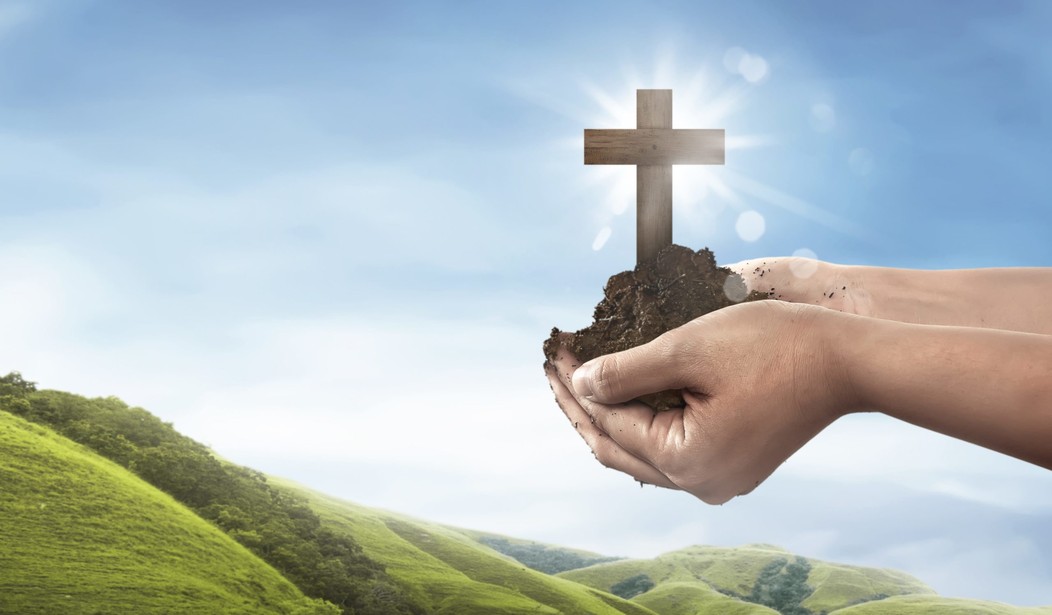On World Soil Day, environmentalists spread alarmism about one specific part of the environment — the ground beneath our feet. But that dirt really is a unique accomplishment, one that shows God’s intelligent design for human beings.
“Our planet has soil like no other planet,” astronomer Hugh Ross, president and founder of Reasons to Believe, told PJ Media. He argued that the soil developed over 3 billion years, and conditions were just perfect to produce the dirt needed for advanced plants to flourish and for those plants to sustain billions of human beings. These developments point to the providence of an intelligent designer.
“You need the history of life to be exactly the way it is to have any hope of human beings on the planet,” Ross explained. His new book Improbable Planet: How Earth Became Humanity’s Home lays out the 3 billion year history of dirt which allowed human beings to live on this planet.
“For the first 3 billion years of life, our planet’s conditions were deadly for advanced life,” Ross explained. “That’s why God waited to create advanced life.” Only “thanks to 3 billion years of sulfate-reducing bacteria” did the soil’s toxicity decrease enough to sustain advanced life life.
Ross explained that the Earth has 60 times less sulfur in its crust than Mars. He pointed to the scene in the feature film The Martian (2015) where Matt Damon is able to grow potatoes on Mars. Unfortunately, this is not scientifically possible. “It’s simply not possible to grow potatoes on Martian soil, the sulfur content is way too high,” the astronomer said.
“It’s thanks to a set of very unusual events that Earth would end up with its highly anomalous abundance ratios of elements,” Ross said. His book lays out the complex history of the planet’s development — how the Solar System migrated outward from the center of the Milky Way, how asteroids from the outer reaches of the Solar System collided with the Earth, and how the Moon formed — and why each step helped produce a potent mix of goldilocks elements for advanced life (and even human technology) to develop.
Yet even with this great mix of elements, there was still too much soil on Earth’s crust for advanced life, so sulfate-reducing bacteria had to work for billions of years to transform soluble metals into insoluble ones. This was a very complicated process.
“There are 22 elements in the periodic table that are vital poisons,” Ross explained. “If you’ve got too much Chromium in your diet, it will kill you. But if you don’t have enough Chromium in your diet, that will kill you, too. It’s this sulfate-reducing bacteria that brings the poisons to the just-right levels.”
But it gets even more complicated. Earth also needed “cryptogamic colonies” of algae, fungi, and bacteria to “chemically transform and condition the soil,” the astronomer said. These life forms “transform rocks into well-conditioned soils that will support more advanced life. You need billions of years of cryptogamic soil activity before you can produce advanced plants.”
“The bottom line is, we better not take our dirt for granted,” Ross declared. “And if you want to grow food on Mars, you’ve got to take your dirt with you.”
Next Page: What environmentalists get right — and terribly wrong — about dirt.
While Ross did not warn about the evils of climate change, he did admit that “environmentalists have a point that human abuse can ruin the very good soil that God gave us.” When people over-irrigate with salty water, the soil becomes too salty to produce good plants. Improper watering can also leach the soil of its mulch and humus. (Humus consists of accumulated decay products from hundreds of millions of years of earlier life. High amounts of it explain why the American prairie and the European plain are so highly productive for food.)
But one element of climate alarmism that drives environmentalists crazy — global warming — is also essential for human life, Ross argued. He explained that “you need to be in an ice age cycle to produce enough food” for the human population on Earth. When ice retreats after the ice age, a powerful wind helps fertilize the plains with high nutrient dust every hundred thousand years.
“Thanks to being in an ice age cycle, we’re able to use the soil of the Earth to feed billions of people,” the astronomer explained. “This is the only time in the history of the Earth where it’s possible to have billions of human beings living here at one time.”
Ross laid out the history of Earth’s soil in terms of God’s providence. “God’s intent is that billions of human beings would come into a loving relationship with Him. But for that to work, the soil has to be designed in such a way as to enable billions of human beings living here at one time.”
The Earth is “fine tuned for human life, and the fine tuning goes up exponentially so that billions of human beings can live here at one time and have the technology where they can hear and respond to the gospel message.”
So yes, human beings can abuse the Earth’s soil, but environmentalists can easily miss the whole story. The remarkable thing about the environment isn’t that people can mess it up but rather that it has enabled human beings to live and thrive in the first place. And the more we learn about how astronomically unlikely it is for everything to have happened just the way it did, the more we come face to face with the awesome power of divine providence.
All people must steward the Earth, but we must not overlook the powerful story of Earth’s history — the careful planning of what looks like a providential creator and the fine-tuning of the dirt beneath our feet.









Join the conversation as a VIP Member